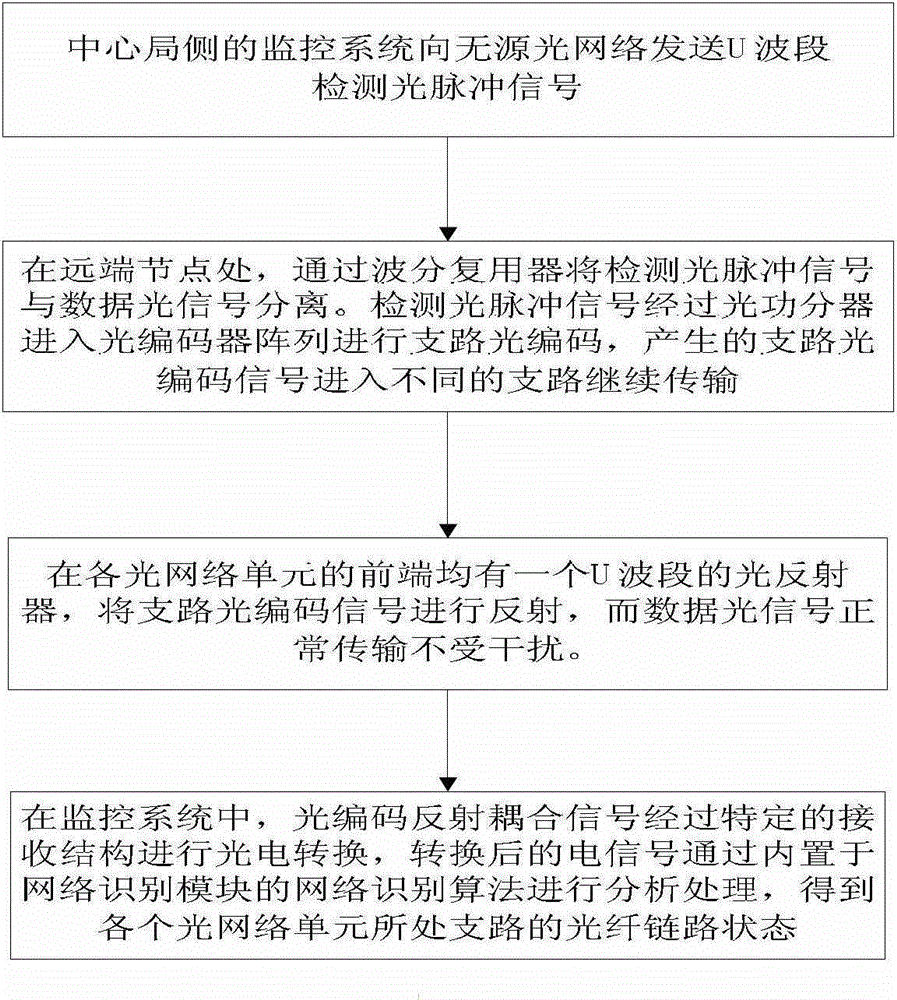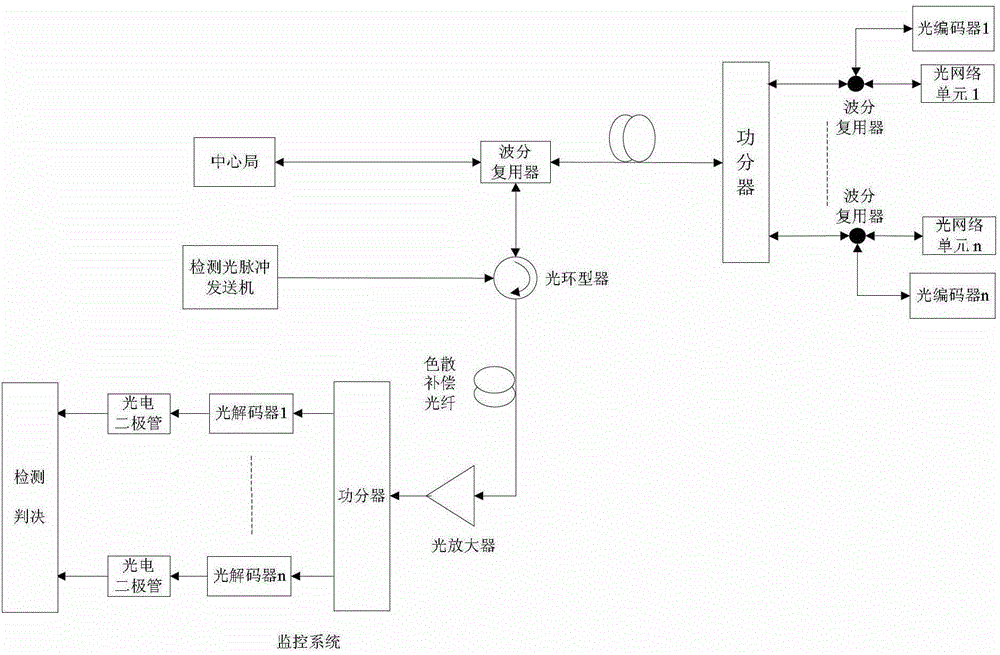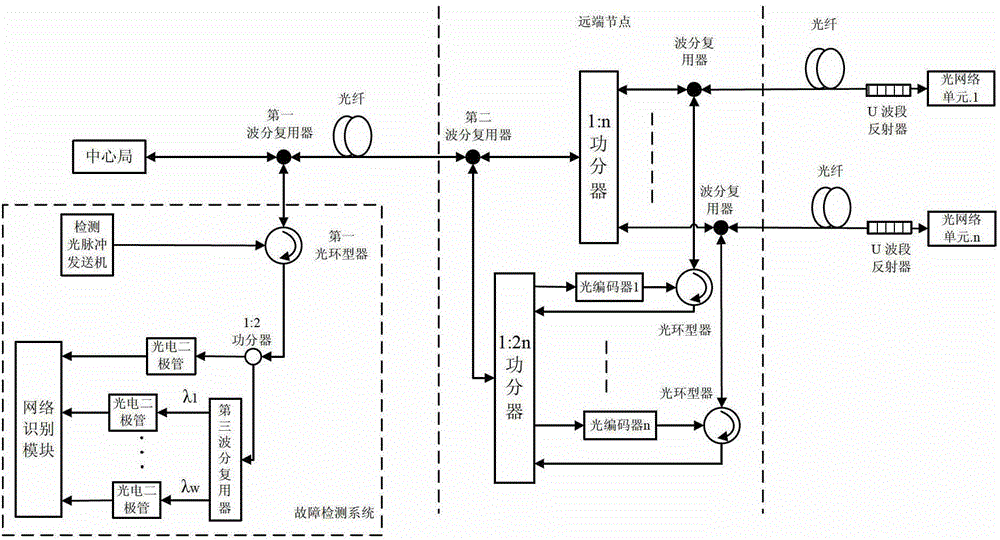Fault detection method for optical fiber links of passive optical networks
A passive optical network and fault detection technology, applied in transmission monitoring/testing/fault measurement systems, electromagnetic wave transmission systems, electrical components, etc., can solve the problems of large optical power loss, high cost, large volume, etc., and achieve long transmission distance, reduce the difficulty of system implementation, and the effect of low insertion loss
- Summary
- Abstract
- Description
- Claims
- Application Information
AI Technical Summary
Problems solved by technology
Method used
Image
Examples
Embodiment Construction
[0033] The technical scheme of the present invention is described in detail below in conjunction with accompanying drawing:
[0034] figure 1 It is a flow chart of the passive optical network fiber link fault detection method of the present invention, comprising the following steps:
[0035] Step 1. The fault detection system on the central office side sends a U-band detection optical pulse signal to the passive optical network;
[0036] Step 2. At the remote node, the detection optical pulse signal is separated from the data optical signal through a wavelength division multiplexer. The detection optical pulse signal enters the optical encoder array through the optical power splitter for optical encoding, and the generated optical encoding signal enters the Different branches continue to transmit, and the optically encoded signals entering different branches are different and orthogonal to each other;
[0037] Step 3. There is a U-band optical reflector at the front end of t...
PUM
 Login to View More
Login to View More Abstract
Description
Claims
Application Information
 Login to View More
Login to View More - R&D
- Intellectual Property
- Life Sciences
- Materials
- Tech Scout
- Unparalleled Data Quality
- Higher Quality Content
- 60% Fewer Hallucinations
Browse by: Latest US Patents, China's latest patents, Technical Efficacy Thesaurus, Application Domain, Technology Topic, Popular Technical Reports.
© 2025 PatSnap. All rights reserved.Legal|Privacy policy|Modern Slavery Act Transparency Statement|Sitemap|About US| Contact US: help@patsnap.com



